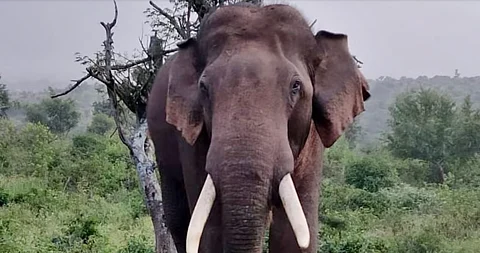

A study report shared by the researchers from National Centre for Biological Science (NCBS) and Indian Institute of Science (IISc) on Saturday, September 28, noted that habitat reduction and increased infrastructure developmental works have affected the natural gene pool of Asiatic elephants.
They also noted that the reduced migration of elephants is also affecting their gene pool.
In the study published in the Current Biology — Divergence and serial colonization shape genetic variation and define conservation units in Asian elephants — the researchers have uncovered new insights into the genetic history of India’s Asian elephants.
The research reveals the existence of five genetically distinct populations of Asian elephants in India — more than previously thought, stated a report by The New Indian Express.
The research team included Prof. Uma Ramakrishnan’s group from NCBS and Prof Raman Sukumar from IISc.
India is home to 60% of the global population of Asian elephants, found across South and Southeast Asia. But today, their habitat is fragmented, surrounded by farmland, human settlements, commercial plantations and linear transport infrastructure. This has resulted in widespread and often severe human- elephant conflict.
Despite their ecological and cultural significance, studies on the population genetic structure, diversity and demographic history of these elephants — critical for identifying conservation and management units — have been limited. The research identified five elephant populations spread across Northern, Central, and Southern India- two populations in the North and three in the South.
“Historically, elephants migrated from the North to the South, but with each migration, their genetic diversity declined,” noted the researchers in the paper.
Dr Anubhab Khan, lead author of the report and IISc faculty said this reduced genetic variation could be the result of a serial founder effect, where fewer individuals from each starting population migrate to establish new populations.
As these populations become smaller, the risk of inbreeding depression increases — a phenomenon where harmful genetic variants are more likely to be inherited due to breeding among related individuals, he said.
The research paper noted that the southernmost population has the lowest genetic diversity and is particularly vulnerable. With less than 50 elephants remaining, researchers warned that this population has a higher chance of extinction.
They also suspect that the recent development along railway lines, highways and other transportation infrastructure may have further reduced gene flow between northern and southern populations. They advocated for carefully considering any translocation of animals across the gap.
“The identification of these five genetically distinct populations underscores the need for region-specific conservation efforts,” the team pointed.
The research team is also planning to develop a genetic toolkit based on DNA extracted from elephant faeces. This toolkit will help monitor populations more accurately, and identify individual elephants in the wild, providing invaluable data for conservationists.
